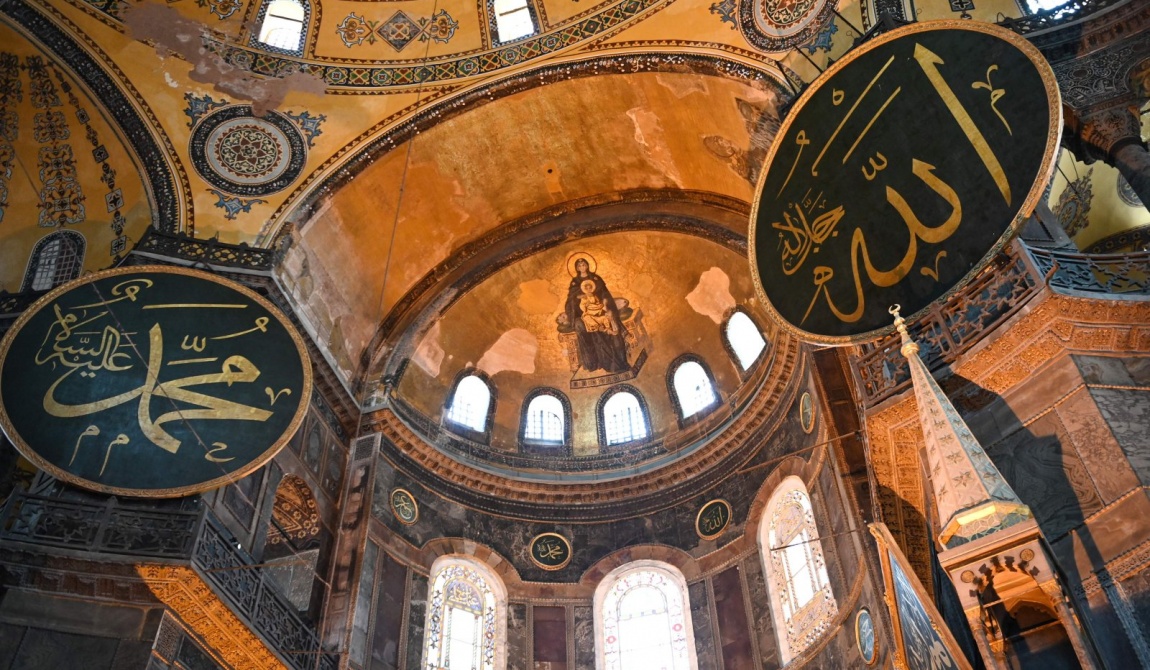 History
HistoryHistory of Hagia Sophia Church, Mosque and Museum
By SU Magazin / 2021-09-06Hagia Sophia is considered as the first and last unique application in terms of architecture, magnificence, size and functionality; It is a product of eastern-western synthesis, which has been inspired by the idea of the Ottoman mosques.
This work is among the most important monuments of the world’s architectural history that have survived to the present day. For this reason, Hagia Sophia, along with its historical past, architecture, mosaics and Turkish buildings, has attracted all humanity for centuries.
Hagia Sophia has been a mosque for 916 years and a mosque for 481 years and has been serving as a museum since 1935.
Byzantine historians (Theophanes, Nikephoros, Gramerci Leon) asserted that the first Hagia Sophia was made during the time of Emperor Constantinos I. (324-337).
This structure, with a wooden roof, with a basilica plan, was burnt after an uprising. No residue from this structure came from day-to-day. Emperor II. Theodosius built Hagia Sophia for the second time and opened a worship service in 415.
This basilica-planned structure was also burnt during the Nica revolution in 532. Excavations made in 1936 revealed some remnants of this. These are steps, columns, titles, various architectural pieces that show the entrance of the mosque.
Emperor Iustinianus (527-565) wanted to build a bigger church than the first two Hagia Sophia, the famous architects of the time Isidoros of Miletus and Hagia Sophia of Tralles Anthemios. Columns, hoods, marbles and colored stones from the ancient city of Anatolia were brought to Istanbul for use in Hagia Sophia.
The construction of Hagia Sophia was started on 23 December 532 and completed on 27 December 537. When viewed from the architectural point of view, a large central space, two side spaces (nef), absis, internal and external narthex have come to fruition. Interior, 100 x 70 m. It is 55 m long, with four large legs on it. at the height of 30.31 m. It is covered with a dome.
Mosaics as well as the architecture of Hagia Sophia are of great importance. The oldest mosaics are mosaics with golden gilded geometric and floral motifs in the interior narthex and side naves. Figurative mosaics IX.-XII. It was built centuries. They are seen on the Emperor’s Gate, on the absiste, on the exit gate and in the upper floor gallery.
Hagia Sophia saw various repairs during the Turkish era which started with the conquest of Istanbul. The periphery of the altar contains the most beautiful examples of Turkish tile art and Turkish writing art. The famous Turkish Calligraphy Kazasker Mustafa İzzet Efendi in the dome from them was taken from the Qur’an with a 7.50 m. round plates are the most interesting ones. These plates contain the names of Allah, Muhammad, Omar, Osman, Ali, Hasan, Abu Bakr, and Husayn. On the sidewalls of the mihrab, there are plates which the Ottoman sultans wrote and presented here.
Hagia Sophia Museum, according to the winter schedule, museum between 09.00-17.00 hours; According to the summer tariff, it can be visited between 09.00-19.00 hours.